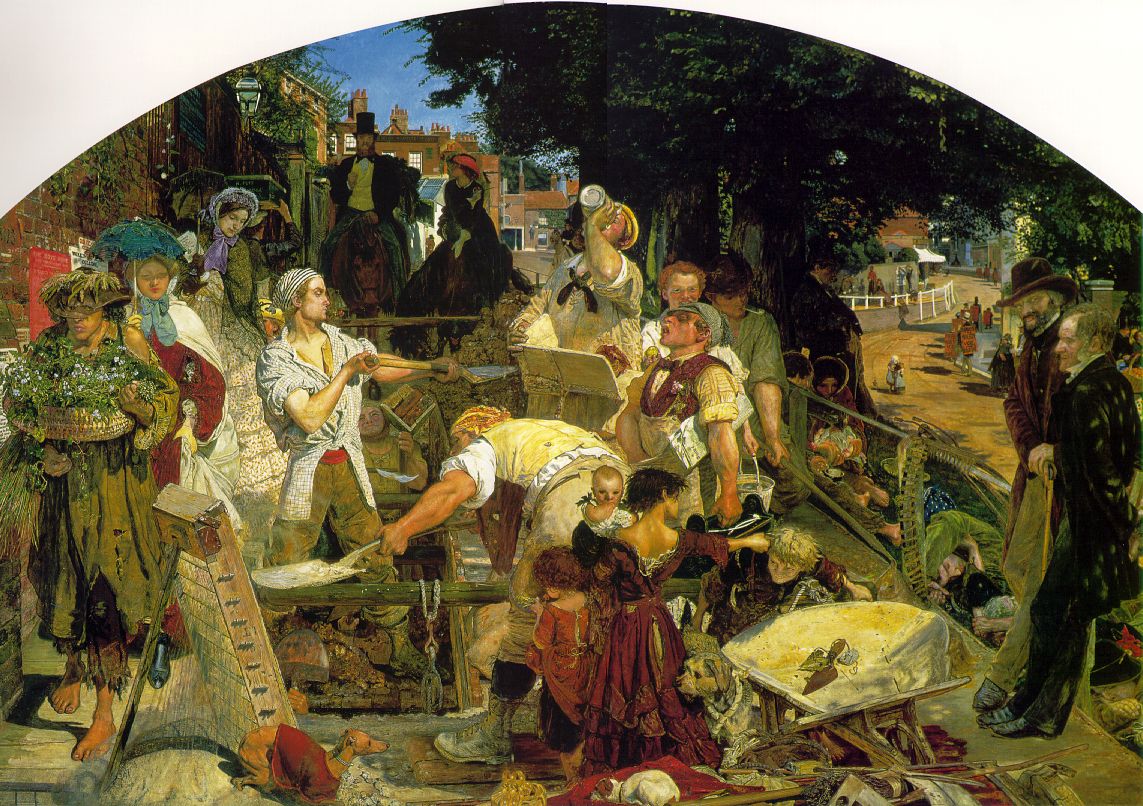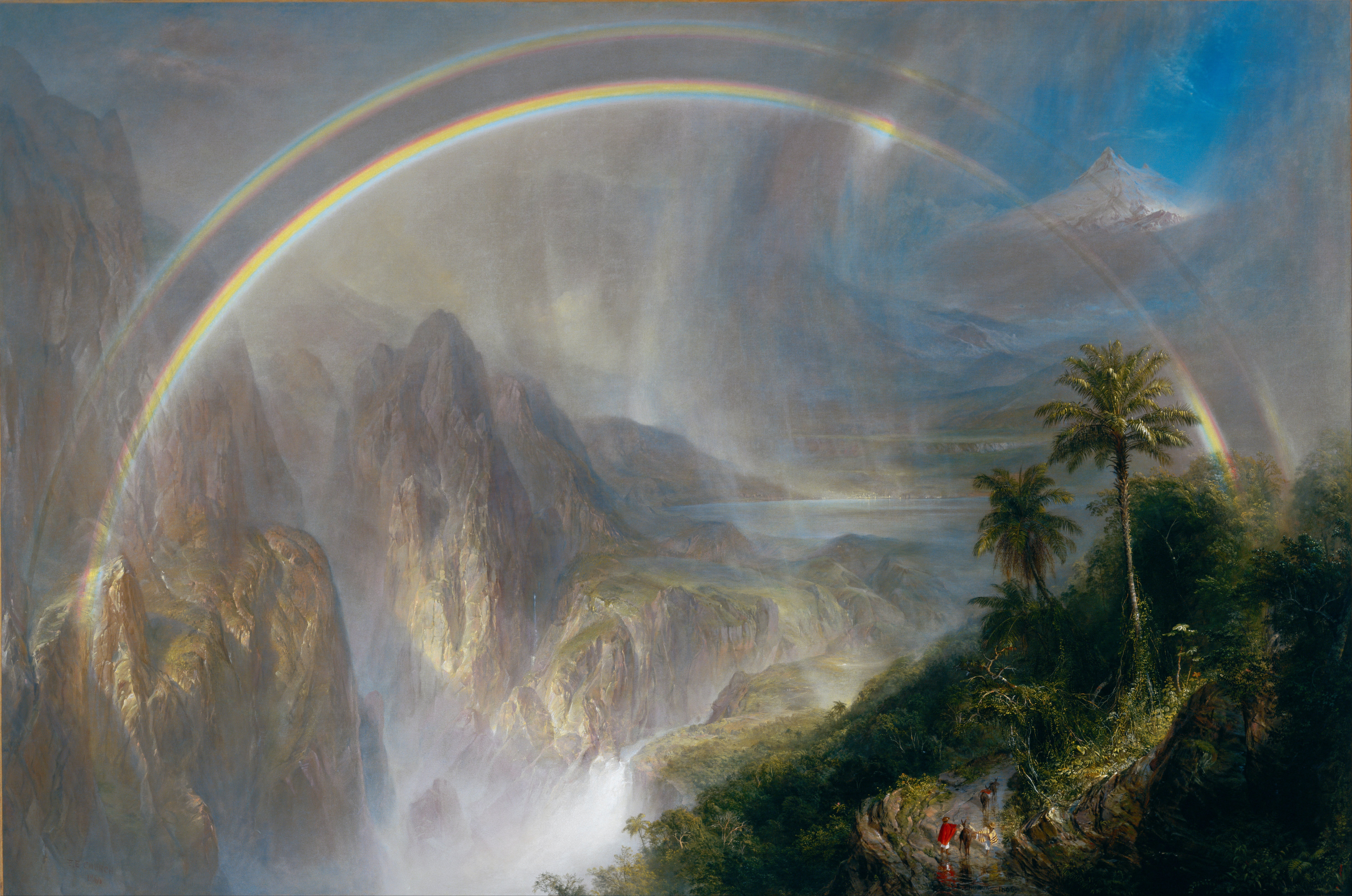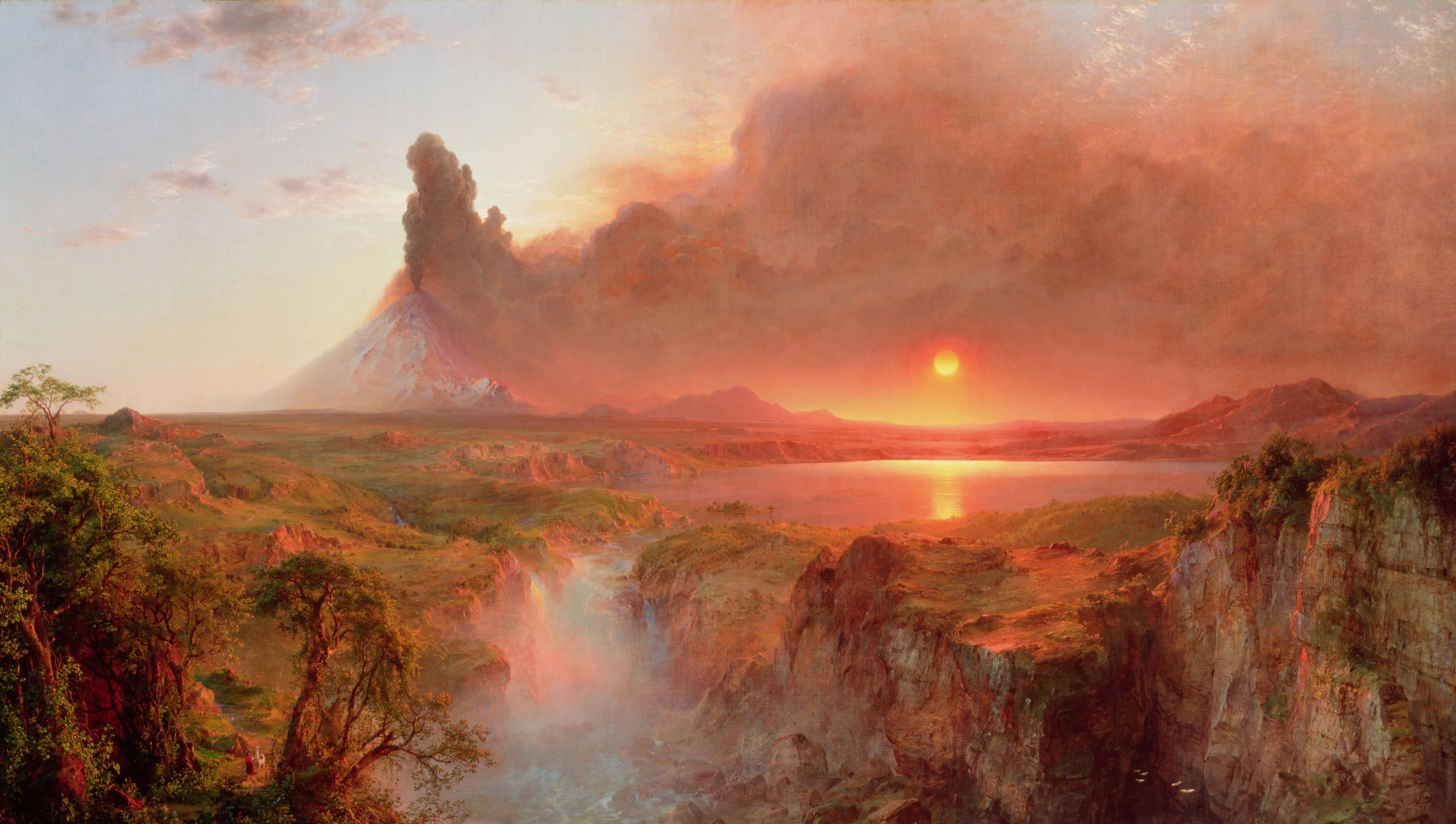|
1865 In Art
Events from the year 1865 in art. Events * July 21 – Charles Dodgson (Lewis Carroll) photographs Effie Gray Millais, John Everett Millais, and their daughters Effie and Mary at 7 Cromwell Place, London. * Ford Madox Brown completes his painting ''Work'' after thirteen years. * Morris, Marshall, Faulkner & Co. install the stained-glass east window in the chapel of St Edmund Hall, Oxford, England, designed by Edward Burne-Jones, William Morris and Philip Webb. * Édouard Manet's painting ''Olympia'' is first exhibited, at the Salon (Paris), and causes controversy. * Jean-François Millet's painting '' The Angelus'' (''L'Angélus'') is first exhibited and becomes very popular in France. * The Bargello in Florence becomes an art museum. Works * Lawrence Alma-Tadema – ''An Egyptian at his Doorway'' * Albert Bierstadt ** ''Looking Down Yosemite Valley, California'' ** '' Staubbach Falls, near Lauterbrunnen, Switzerland'' * Ford Madox Brown – ''Work'' * Constantino Brumidi – ' ... [...More Info...] [...Related Items...] OR: [Wikipedia] [Google] [Baidu] |
July 21
Events Pre-1600 * 356 BC – The Temple of Artemis in Ephesus, one of the Seven Wonders of the World, is destroyed by arson. * 230 – Pope Pontian succeeds Urban I as the eighteenth pope. After being exiled to Sardinia, he became the first pope to resign his office. * 285 – Diocletian appoints Maximian as Caesar and co-ruler. * 365 – The 365 Crete earthquake affected the Greek island of Crete with a maximum Mercalli intensity of XI (''Extreme''), causing a destructive tsunami that affects the coasts of Libya and Egypt, especially Alexandria. Many thousands were killed. * 905 – King Berengar I of Italy and a hired Hungarian army defeats the Frankish forces at Verona. King Louis III is captured and blinded for breaking his oath (see 902). * 1242 – Battle of Taillebourg: Louis IX of France puts an end to the revolt of his vassals Henry III of England and Hugh X of Lusignan. * 1403 – Battle of Shrewsbury: King Henry IV of England defeats rebe ... [...More Info...] [...Related Items...] OR: [Wikipedia] [Google] [Baidu] |
Florence
Florence ( ; it, Firenze ) is a city in Central Italy and the capital city of the Tuscany region. It is the most populated city in Tuscany, with 383,083 inhabitants in 2016, and over 1,520,000 in its metropolitan area.Bilancio demografico anno 2013, datISTAT/ref> Florence was a centre of medieval European trade and finance and one of the wealthiest cities of that era. It is considered by many academics to have been the birthplace of the Renaissance, becoming a major artistic, cultural, commercial, political, economic and financial center. During this time, Florence rose to a position of enormous influence in Italy, Europe, and beyond. Its turbulent political history includes periods of rule by the powerful Medici family and numerous religious and republican revolutions. From 1865 to 1871 the city served as the capital of the Kingdom of Italy (established in 1861). The Florentine dialect forms the base of Standard Italian and it became the language of culture throughout Ital ... [...More Info...] [...Related Items...] OR: [Wikipedia] [Google] [Baidu] |
Aurora Borealis (painting)
''Aurora Borealis'' is an 1865 painting by Frederic Edwin Church of the aurora borealis and the Arctic expedition of Isaac Israel Hayes. The painting measures and is now owned by the Smithsonian American Art Museum. Background ''Aurora Borealis'' is based on two separate sketches. The first incident was an aurora witnessed by Church's pupil, the Arctic explorer Isaac I. Hayes. Hayes provided a sketch and description of the aurora borealis display he witnessed one January evening. Coinciding with Hayes' furthest northern movement into what he named Cape Leiber, the aurora borealis appeared over the peak. Describing the event, Hayes wrote: The light grew by degrees more and more intense, and from irregular bursts it settled into an almost steady sheet of brightness... The exhibition, at first tame and quiet, became in the end startling in its brilliancy. The broad dome above me is all ablaze... The colour of the light was chiefly red, but this was not constant, and every hue ... [...More Info...] [...Related Items...] OR: [Wikipedia] [Google] [Baidu] |
Frederic Edwin Church
Frederic Edwin Church (May 4, 1826 – April 7, 1900) was an American landscape painter born in Hartford, Connecticut. He was a central figure in the Hudson River School of American landscape painters, best known for painting large landscapes, often depicting mountains, waterfalls, and sunsets. Church's paintings put an emphasis on realistic detail, dramatic light, and panoramic views. He debuted some of his major works in single-painting exhibitions to a paying and often enthralled audience in New York City. In his prime, he was one of the most famous painters in the United States. Biography Beginnings Frederic Edwin Church was a direct descendant of Richard Church, a Puritan pioneer from England who accompanied Thomas Hooker on the original journey through the wilderness from Massachusetts to what would become Hartford, Connecticut. Church was the son of Eliza (1796–1883) and Joseph Church (1793–1876). Frederic had two sisters and no surviving brothers. His father was s ... [...More Info...] [...Related Items...] OR: [Wikipedia] [Google] [Baidu] |
Connemara Girl
''A Connemara Girl'' is an early 1870s painting by the Irish artist Augustus Nicholas Burke (July 28, 1838 – 1891). One of the most identifiable paintings in Ireland, it depicts a young girl in traditional Connemara attire carrying a bundle near the shore. It is one of many paintings Burke created of daily life around his native Connemara. It hangs in the National Gallery of Ireland The National Gallery of Ireland ( ga, Gailearaí Náisiúnta na hÉireann) houses the national collection of Irish and European art. It is located in the centre of Dublin with one entrance on Merrion Square, beside Leinster House, and another on ... and is one of the more popular paintings despite its simple subject matter. The painting is oil on canvas (63 x 48 cm) and was presented by Mrs Ida Monahan in 1951. The National Gallery of Ireland label text is: "Showing a young woman in traditional Connemara attire, this painting might be said to evoke rather than illustrate Augustus Burke’s ... [...More Info...] [...Related Items...] OR: [Wikipedia] [Google] [Baidu] |
Augustus Nicholas Burke
Augustus Joseph Nicholas Burke (28 July 1838 – 1891) was an Irish artist and an Academician of the Royal Hibernian Academy (RHA). Early life Burke was born into the Galway Burkes of Glinsk and was the sixth son of William Burke of Knocknagur, Tuam, Co. Galway. He was born at Waterslade House in the town. One of his brothers was Theobald Hubert Burke, 13th Baronet of Glinsk, while another brother was Thomas Henry Burke (Irish Politician), Thomas Henry Burke, Permanent Under Secretary at the Irish Office. Career He showed an early interest in drawing, displaying a love for depicting the people and land of Connemara. His career in the arts was initiated at the Royal Academy in London. He would exhibit at the Royal Academy and the Royal Hibernian Academy, from 1863 until his death, where he was also Professor of Painting. From 1870 to 1872 he resided in the Netherlands where he illustrated a handful of Dutch scenes. One of the earliest Irish artists to travel to Brittany ... [...More Info...] [...Related Items...] OR: [Wikipedia] [Google] [Baidu] |
United States Capitol Rotunda
The United States Capitol rotunda is the tall central rotunda of the United States Capitol in Washington, D.C. It has been described as the Capitol's "symbolic and physical heart". Built between 1818 and 1824, the rotunda is located below the Capitol dome, which was built between 1857 and 1866. The rotunda is connected by corridors leading south to the House of Representatives and north to the Senate chambers. To the immediate south is the semi-circular National Statuary Hall, which was the House of Representatives chamber until 1857. To the northeast is the Old Senate Chamber, used by the Senate until 1859 and by the Supreme Court until 1935. The rotunda is in diameter, rises to the top of its original walls and to the canopy of the dome, and was visited daily by thousands of people before the COVID-19 pandemic. The space is a national showcase of art, and includes numerous historical paintings and sculptures. It is also used for ceremonial events authorized by concurrent ... [...More Info...] [...Related Items...] OR: [Wikipedia] [Google] [Baidu] |
Fresco
Fresco (plural ''frescos'' or ''frescoes'') is a technique of mural painting executed upon freshly laid ("wet") lime plaster. Water is used as the vehicle for the dry-powder pigment to merge with the plaster, and with the setting of the plaster, the painting becomes an integral part of the wall. The word ''fresco'' ( it, affresco) is derived from the Italian adjective ''fresco'' meaning "fresh", and may thus be contrasted with fresco-secco or secco mural painting techniques, which are applied to dried plaster, to supplement painting in fresco. The fresco technique has been employed since antiquity and is closely associated with Italian Renaissance painting. The word ''fresco'' is commonly and inaccurately used in English to refer to any wall painting regardless of the plaster technology or binding medium. This, in part, contributes to a misconception that the most geographically and temporally common wall painting technology was the painting into wet lime plaster. Even in appar ... [...More Info...] [...Related Items...] OR: [Wikipedia] [Google] [Baidu] |
The Apotheosis Of Washington
''The Apotheosis of Washington'' is the fresco painted by Greek-Italian artist Constantino Brumidi in 1865 and visible through the oculus of the dome in the rotunda of the United States Capitol Building. The fresco is suspended above the rotunda floor and covers an area of . The figures painted are up to tall and are visible from the floor below. The dome was completed in 1863, and Brumidi painted it over the course of 11 months at the end of the Civil War. He was paid $40,000 ($ in today's funds) for the fresco. Brumidi had worked for three years in the Vatican under Pope Gregory XVI, and served several aristocrats as an artist for palaces and villas, including the prince Torlonia. He immigrated to the United States in 1852, and spent much of the last 25 years of his life working in the Capitol. In addition to ''The Apotheosis of Washington'' he designed the Brumidi Corridors. Symbolism ''The Apotheosis of Washington'' depicts George Washington sitting amongst the hea ... [...More Info...] [...Related Items...] OR: [Wikipedia] [Google] [Baidu] |
Constantino Brumidi
Constantino Brumidi (July 26, 1805 – February 19, 1880) was a Greek-Italian-American historical painter, best known and honored for his fresco work, Apotheosis of Washington, in the Capitol Building in Washington, DC. Parentage and early life Brumidi was born in Rome, his father a Greek from Filiatra in the province of Messinia, Greece, and his mother an Italian. He showed his talent for fresco painting at an early age and painted in several Roman palaces, among them being that of Prince Torlonia. Under Gregory XVI he worked for three years in the Vatican. Immigration and following work The occupation of Rome by French forces in 1849 apparently persuaded Brumidi to emigrate, having joined the short-lived risorgimental Roman Republic, and he sailed for the United States, where he became a naturalized citizen in 1852. Taking up his residence in New York City, the artist painted a number of portraits. In 1854 Brumidi went to Mexico, where he painted an allegorical represent ... [...More Info...] [...Related Items...] OR: [Wikipedia] [Google] [Baidu] |
Looking Down Yosemite Valley, California
''Looking Down the Yosemite Valley, California'' is an 1865 painting by the German-American painter Albert Bierstadt (1830–1902). It was Bierstadt's first large-scale Yosemite picture, a subject for which he would become well known. It presents a view of one of America's most scenic spots. Based on sketches made during a visit in 1863, Bierstadt paints the valley from a vantage point just above the Merced River, looking due west with the prospect framed by El Capitan on the right, and Sentinel Rock on the left; the spire of Middle Cathedral Rock The Middle Cathedral Rock is a prominent rock face on the south side of Yosemite Valley, California. El Capitan lies due north of Middle Cathedral. Middle Cathedral's East Buttress Route is recognized in the historic climbing text ''Fifty Class ... is visible in the distance. References External links American Paradise: The World of the Hudson River School an exhibition catalog from The Metropolitan Museum of Art (fully available ... [...More Info...] [...Related Items...] OR: [Wikipedia] [Google] [Baidu] |




.jpg)

